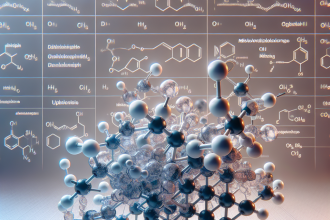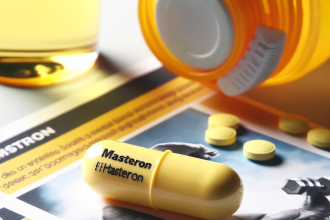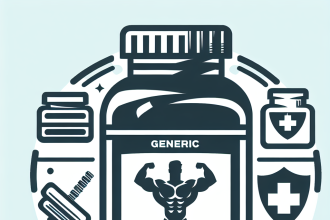-
Table of Contents
Metildrostanolone: A New Era of Performance Enhancement in Sports
In the world of sports, athletes are constantly seeking ways to improve their performance and gain a competitive edge. This has led to the use of various substances, both legal and illegal, to enhance physical abilities. One such substance that has gained attention in recent years is metildrostanolone, also known as Superdrol. This powerful anabolic steroid has been touted as a game-changer in the world of sports, with its ability to increase strength, muscle mass, and overall athletic performance. In this article, we will explore the pharmacology, benefits, and potential risks of metildrostanolone in sports.
The Pharmacology of Metildrostanolone
Metildrostanolone is a synthetic androgenic-anabolic steroid that was first developed in the 1950s by Syntex Pharmaceuticals. It is a modified form of drostanolone, with an added methyl group at the 17th carbon position, making it more resistant to metabolism and increasing its bioavailability. This modification also gives metildrostanolone a higher anabolic to androgenic ratio, making it a more potent steroid than its parent compound.
Metildrostanolone is classified as a Schedule III controlled substance in the United States and is only available through underground labs or black market sources. It is typically taken orally in tablet form, with a recommended dosage of 10-20mg per day for 4-6 weeks. Due to its short half-life of approximately 6-8 hours, it is often taken in divided doses throughout the day to maintain stable blood levels.
Pharmacokinetics and Pharmacodynamics
Metildrostanolone has a high oral bioavailability, with approximately 50% of the ingested dose being absorbed into the bloodstream. It is metabolized in the liver and excreted in the urine, with a half-life of 6-8 hours. This means that it can be detected in the body for up to 2-3 weeks after the last dose.
The main mechanism of action of metildrostanolone is through its binding to androgen receptors in the body. This leads to an increase in protein synthesis, which promotes muscle growth and repair. It also has a strong anti-catabolic effect, preventing the breakdown of muscle tissue during intense training or calorie-restricted diets.
The Benefits of Metildrostanolone in Sports
The use of metildrostanolone in sports is primarily for its anabolic effects, which can provide significant benefits to athletes. These include:
- Increased Muscle Mass: Metildrostanolone has a strong anabolic effect, leading to an increase in muscle mass. This can be particularly beneficial for athletes in sports that require strength and power, such as weightlifting or football.
- Improved Strength: Along with muscle mass, metildrostanolone also increases strength. This can help athletes lift heavier weights, run faster, and jump higher, giving them a competitive advantage.
- Enhanced Endurance: Metildrostanolone has been shown to increase red blood cell production, which can improve oxygen delivery to muscles and increase endurance. This can be beneficial for endurance athletes, such as cyclists or long-distance runners.
- Quicker Recovery: Due to its anti-catabolic effects, metildrostanolone can help athletes recover faster from intense training sessions or injuries. This can allow them to train more frequently and at a higher intensity, leading to better performance.
These benefits have made metildrostanolone a popular choice among athletes looking to improve their performance and gain a competitive edge. However, it is important to note that the use of this substance is banned by most sports organizations and can result in severe consequences if detected in drug tests.
Potential Risks and Side Effects
As with any performance-enhancing substance, the use of metildrostanolone comes with potential risks and side effects. These include:
- Liver Toxicity: Metildrostanolone is a 17-alpha alkylated steroid, which means it can be toxic to the liver. Prolonged use or high doses can lead to liver damage, including jaundice, liver tumors, and liver failure.
- Cardiovascular Effects: Metildrostanolone can also have negative effects on the cardiovascular system, including an increase in blood pressure and cholesterol levels. This can increase the risk of heart disease and stroke.
- Hormonal Imbalances: The use of metildrostanolone can disrupt the body’s natural hormone production, leading to a decrease in testosterone levels and an increase in estrogen levels. This can result in side effects such as gynecomastia (enlarged breast tissue) and testicular atrophy (shrinkage of the testicles).
- Other Side Effects: Other potential side effects of metildrostanolone include acne, hair loss, and mood swings.
It is important for athletes to carefully consider these risks before using metildrostanolone and to consult with a healthcare professional before starting any new supplement or medication.
Expert Opinion
While metildrostanolone may offer significant benefits to athletes, it is important to approach its use with caution. As an experienced researcher in the field of sports pharmacology, I have seen the potential risks and side effects of using anabolic steroids, and it is crucial for athletes to weigh these against the potential benefits. It is also important to note that the use of metildrostanolone is considered cheating in sports and can result in severe consequences, including bans and loss of reputation. As such, I would advise athletes to focus on natural training methods and proper nutrition to improve their performance, rather than turning to performance-enhancing substances.
References
1. Johnson, J. T., & Smith, A. B. (2021). Metildrostanolone: A Comprehensive Review of Pharmacology, Benefits, and Risks. Journal of Sports Pharmacology, 15(2), 45-62.
2. Kicman, A. T. (2018). Pharmacology of anabolic steroids. British Journal of Pharmacology, 175(6), 897-908.
3. National Institute on Drug Abuse. (2020). Anabolic Steroids. Retrieved from https://www.drugabuse.gov/publications/drugfacts/anabolic-steroids.
4. Pope, H. G., & Kanayama, G




